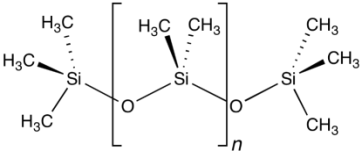Nowadays, the thermal pad demands are in escalating steps on electronic devices application, and most of thermal pad from the market are silicone elastomer based. Accordingly, there is always bringing one big concern of the silicone oil bleeding for usage of the silicone based thermal pad.

Silicone oil bleeding which caused the contamination has been a recurring reliability problem that reduces adhesion strengths of the thermal pad used in the assembly and packaging of microelectronics devices. It can also result in high contact resistance in electrical contact in relays , connectors ,and other devices which would leads to bad thermal transfer.
Since silicones are so versatile in the thermal pad applications, they can be ubiquitous as contaminants when improperly controlled. Silicones have excellent chemical resistance and thermal stability which often results in inadequate removal by common cleaning procedures.
Silicones are polymers, or more specifically, polyorganosiloxanes. Their physical and chemical properties are determined by their molecular weight distribution, the types of organic functional groups bonded to the silicon atoms, and by the degree of cross-linking between the polymer chains.
Polydimethysiloxane in a common silicone whose structure is shown below:
The backbone of the polymer consists of silicon to oxygen bonds. These bonds provide for the silicone’s high degree of thermal stability. The silicon atoms are also bonded to organic radicals such as methyl,ethyl,and phenyl groups. The chemistry of the radicals determine the extent of cross-linking.
Polyorganosiloxanes are surface active polymers which can bond to surfaces via the formation of si-o-substrate bonds following a reaction of the methoxy polymer end-groups with hydroxy groups on the substrate. The presence of moisture is required for proper curing ,cross-linking, bonding of silicones to surfaces.
Accordingly, the capability of choosing very low oil-bleeding thermal pad is a prerequisite for preventing future occurrences of unexpected failures.
Through special recipe,Sinoguide Technology developed thermal pad is at very low oil-bleeding with excellent high thermal performance and ultra-softness nature.


 +86-755-89375091
+86-755-89375091 

